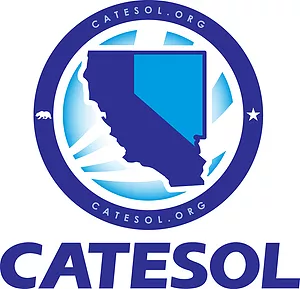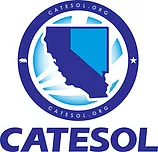Back to Blog
CATESOL Position Statement: AB 705
11/09/2018
Julius Pañares
 CATESOL Position Statement in Response to proposed legislation AB 705 (Irwin)
CATESOL Position Statement in Response to proposed legislation AB 705 (Irwin)
May 2017
The background: 2017 proposed California legislation AB 705 (Irwin) requires community college districts or colleges “to maximize the probability that [a] student will enter and co...
CATESOL Position Statement in Response to proposed legislation AB 705 (Irwin)
May 2017
The background: 2017 proposed California legislation AB 705 (Irwin) requires community college districts or colleges “to maximize the probability that [a] student will enter and complete transfer-level coursework in English and mathematics within a one-year timeframe” (AB 705, Legislative Counsel’s Digest (1) 5/3/17) and for colleges to use high school coursework, grades, and grade point average in placing students into English and math courses. ESL is not distinguished as a separate discipline from English in the language of the current amendments; moreover, statewide measures and tools have often conflated ESL with basic skills despite the recommendation of both the international (TESOL) and statewide (CATESOL) professional organizations for the ESL discipline.
AB 705 also requires the community college districts or colleges to “minimize the impact on student financial aid and unit requirements for the degree by exploring embedded support and low or noncredit support options” (AB 705, Section 2 (d) (1) (2)).
The position: English language learners (ELLs) should be exempt from any statewide mandates to 1) limit the length of time completing in language development via credit academic ESL coursework; and 2) compel ELLs to enroll in low-credit or noncredit ESL instruction in order to “minimize impact” on financial aid and unit requirements. Credit and noncredit ESL have important, and different, roles to play in serving ELLs, and both should be supported in order to serve the various needs of the population.
Learning any language can be a difficult task, and it is a multi-faceted endeavor. Although the state recognizes the challenges involved in language learning and rewards transfer-level credit to students completing coursework in foreign languages, it does not apply the same standards to credit academic ESL coursework. Rather, ESL has long been inaccurately classified as a discipline akin to developmental (“remedial”) English or basic skills.
There is precedent and support among the California community colleges for the exclusion of ESL from statewide mandates related to matriculation and assessment. In Fall 2011, the Academic Senate for the California Community Colleges (ASCCC) passed Resolution 6.01 (Holcroft) Removal of ESL Students from Student Success Task Force Recommendations in support of the needs of ELLs. This resolution sought to distinguish and exclude ELL populations from the recommendations of the Community College Student Success Task Force on the premise that there are “fundamental differences between basic skills and ESL.”
Additionally, the ESL professional organization for California and Nevada supports the distinction that ESL is inherently different from basic skills. According to the California Teachers of English to Speakers of Other Languages (CATESOL) Position Statement on the Differences Between English as a Second Language and Basic Skills Instruction at Post-Secondary Levels (1994), students enrolled in developmental English course differ from ELLs in the following ways:
Basic Skills Students
Unfortunately, ESL or ESOL courses are frequently mischaracterized as developmental or remedial courses, and thus are not always acknowledged for academic or degree-granting credit. These policies and practices fail to recognize that ESOL courses offer a rigorous, standards-based academic program that requires students to perform at a level similar to and on par with the subject matter in other degree-bearing courses, such as courses in English composition or in foreign language. TESOL International Association advocates that ESOL courses in postsecondary academic receive academic degree-granting credit.
It should thus be recognized that acquiring academic English reading, writing, listening, and speaking skills at the postsecondary level in order to succeed in community college coursework is as cognitively demanding as learning any foreign language. Essentially, for English language learners enrolled in credit ESL courses, English IS a foreign language. Credit academic ESL coursework is also a gateway to accessing knowledge at the highest levels by providing students an opportunity to achieve the American dream through a community college education. In short, credit academic ESL coursework provides students linguistic equity.
In its status as of May, 2017, AB 705 (Irwin) and similar legislation is reflective of current statewide measures and tools that fail to recognize differences between basic skills and ELLs. An assumption cannot be made that students enrolled in credit ESL courses can accomplish in a “one-year timeline” advanced postsecondary linguistic competence that typically takes seven years or more (Thomas & Collier, 1997). The ability to function in a foreign language at the postsecondary level can rarely be accomplished within the timeframe of two 16-week semesters. An assumption cannot be made that ELLs only seek to learn English to obtain employment or to communicate with other community members. In addition, an assumption cannot be made that students will be best served by low-credit or non-credit options which, while certainly valuable, serve a different purpose than credit-level ESL courses. This is particularly true for international students who, by federal law, are prohibited from enrolling in noncredit instruction. By not distinguishing students enrolled in credit ESL courses as an exempt population, legislation such as AB 705 threatens linguistic equity for millions of adults statewide and verges on academic discrimination by limiting access to the California community college system and programs of study leading to advanced certificates, degrees, and transfer to four-year institutions, programs which require advanced competence of academic English provided through well-developed credit ESL courses at the colleges.

Julius Pañares
 CATESOL Position Statement in Response to proposed legislation AB 705 (Irwin)
CATESOL Position Statement in Response to proposed legislation AB 705 (Irwin) May 2017
The background: 2017 proposed California legislation AB 705 (Irwin) requires community college districts or colleges “to maximize the probability that [a] student will enter and co...
CATESOL Position Statement in Response to proposed legislation AB 705 (Irwin)
May 2017
The background: 2017 proposed California legislation AB 705 (Irwin) requires community college districts or colleges “to maximize the probability that [a] student will enter and complete transfer-level coursework in English and mathematics within a one-year timeframe” (AB 705, Legislative Counsel’s Digest (1) 5/3/17) and for colleges to use high school coursework, grades, and grade point average in placing students into English and math courses. ESL is not distinguished as a separate discipline from English in the language of the current amendments; moreover, statewide measures and tools have often conflated ESL with basic skills despite the recommendation of both the international (TESOL) and statewide (CATESOL) professional organizations for the ESL discipline.
AB 705 also requires the community college districts or colleges to “minimize the impact on student financial aid and unit requirements for the degree by exploring embedded support and low or noncredit support options” (AB 705, Section 2 (d) (1) (2)).
The position: English language learners (ELLs) should be exempt from any statewide mandates to 1) limit the length of time completing in language development via credit academic ESL coursework; and 2) compel ELLs to enroll in low-credit or noncredit ESL instruction in order to “minimize impact” on financial aid and unit requirements. Credit and noncredit ESL have important, and different, roles to play in serving ELLs, and both should be supported in order to serve the various needs of the population.
Learning any language can be a difficult task, and it is a multi-faceted endeavor. Although the state recognizes the challenges involved in language learning and rewards transfer-level credit to students completing coursework in foreign languages, it does not apply the same standards to credit academic ESL coursework. Rather, ESL has long been inaccurately classified as a discipline akin to developmental (“remedial”) English or basic skills.
There is precedent and support among the California community colleges for the exclusion of ESL from statewide mandates related to matriculation and assessment. In Fall 2011, the Academic Senate for the California Community Colleges (ASCCC) passed Resolution 6.01 (Holcroft) Removal of ESL Students from Student Success Task Force Recommendations in support of the needs of ELLs. This resolution sought to distinguish and exclude ELL populations from the recommendations of the Community College Student Success Task Force on the premise that there are “fundamental differences between basic skills and ESL.”
Additionally, the ESL professional organization for California and Nevada supports the distinction that ESL is inherently different from basic skills. According to the California Teachers of English to Speakers of Other Languages (CATESOL) Position Statement on the Differences Between English as a Second Language and Basic Skills Instruction at Post-Secondary Levels (1994), students enrolled in developmental English course differ from ELLs in the following ways:
Basic Skills Students
- are comfortable with, and situated to, English being the dominate language of instruction;
- have received all or most of their education in English but still need to develop academic literacy (i.e., reading and writing skills) in English;
- have oral fluency and an intuitive knowledge of the grammar of spoken English, but need to develop literacy;
- are familiar with American culture and customs.
- use a foreign language (English) to acquire intellectual knowledge;
- may have academic skills which they have already developed in their first language;
- are often unfamiliar with American culture, customs, and academic expectations.
Unfortunately, ESL or ESOL courses are frequently mischaracterized as developmental or remedial courses, and thus are not always acknowledged for academic or degree-granting credit. These policies and practices fail to recognize that ESOL courses offer a rigorous, standards-based academic program that requires students to perform at a level similar to and on par with the subject matter in other degree-bearing courses, such as courses in English composition or in foreign language. TESOL International Association advocates that ESOL courses in postsecondary academic receive academic degree-granting credit.
It should thus be recognized that acquiring academic English reading, writing, listening, and speaking skills at the postsecondary level in order to succeed in community college coursework is as cognitively demanding as learning any foreign language. Essentially, for English language learners enrolled in credit ESL courses, English IS a foreign language. Credit academic ESL coursework is also a gateway to accessing knowledge at the highest levels by providing students an opportunity to achieve the American dream through a community college education. In short, credit academic ESL coursework provides students linguistic equity.
In its status as of May, 2017, AB 705 (Irwin) and similar legislation is reflective of current statewide measures and tools that fail to recognize differences between basic skills and ELLs. An assumption cannot be made that students enrolled in credit ESL courses can accomplish in a “one-year timeline” advanced postsecondary linguistic competence that typically takes seven years or more (Thomas & Collier, 1997). The ability to function in a foreign language at the postsecondary level can rarely be accomplished within the timeframe of two 16-week semesters. An assumption cannot be made that ELLs only seek to learn English to obtain employment or to communicate with other community members. In addition, an assumption cannot be made that students will be best served by low-credit or non-credit options which, while certainly valuable, serve a different purpose than credit-level ESL courses. This is particularly true for international students who, by federal law, are prohibited from enrolling in noncredit instruction. By not distinguishing students enrolled in credit ESL courses as an exempt population, legislation such as AB 705 threatens linguistic equity for millions of adults statewide and verges on academic discrimination by limiting access to the California community college system and programs of study leading to advanced certificates, degrees, and transfer to four-year institutions, programs which require advanced competence of academic English provided through well-developed credit ESL courses at the colleges.
